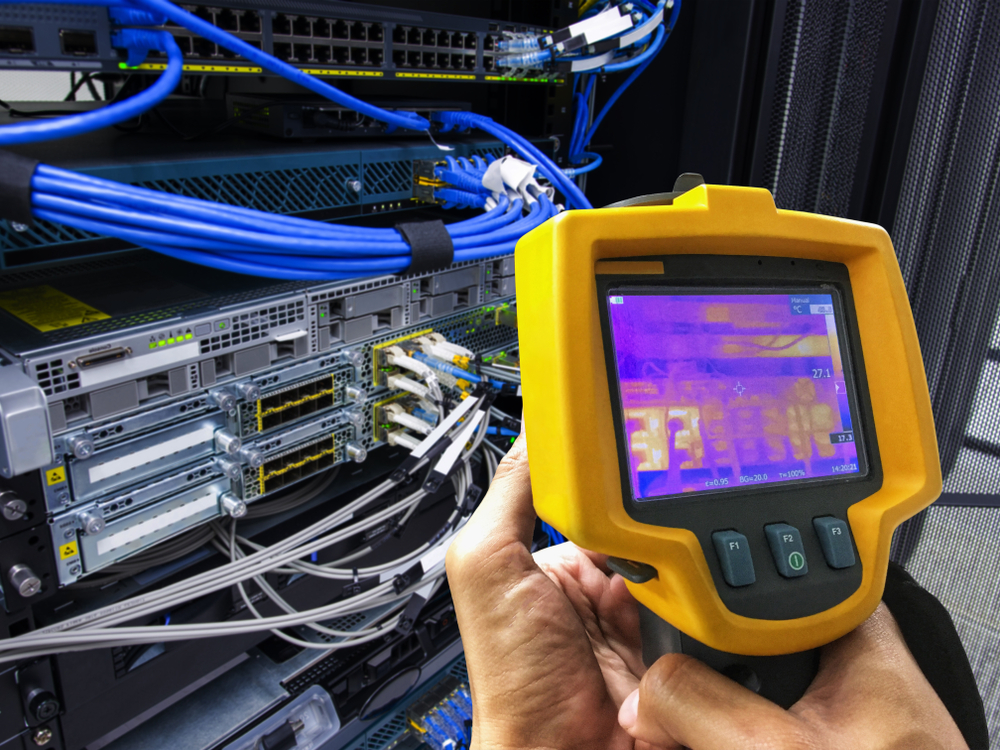January 31
In part 1 of this 2 part blog, we discussed the challenges that high-density compute creates for data centers. You didn’t think we’d leave you in the heat, without offering up a solution did you? Innovation in this sector is exciting, so cool down with the latest technologies that are changing the data center.
Over the last decade, high-density data centers have implemented a number of groundbreaking technologies to help them overcome cooling challenges. Organizations migrating into colocation facilities can take advantage of these innovative approaches to managing heating and cooling in high density environments, allowing them to boost performance without suffering heat-related outages or enduring sky-rocketing costs.
1. Direct-to-Chip Cooling
Sometimes known as single phase immersion cooling, direct-to-chip cooling pumps liquid (usually water or a water-glycol mixture) directly onto the surface of the server's processors to absorb heat. The liquid then flows through a radiator or other heat exchanger to dissipate the heat before being pumped back onto the processors.
Direct-to-chip cooling is not only more effective at removing heat from high-power density components such as CPUs and GPUs, but it also greatly reduces the amount of cooling airflow needed in the server room. The ability to precisely target cooling resources makes this system far more efficient than traditional air conditioning approaches.
2. Two Phase Immersion Cooling
In two-phase immersion cooling, servers are immersed in a specially engineered liquid coolant that is maintained at a temperature below its low boiling point (usually below 50°C). The liquid is typically a dielectric fluid, such as mineral oil, that is non-conductive and has a high thermal conductivity.
When the server generates heat, the liquid around the components begins to boil and creates vapor that rises to the top of the container and condenses back into a liquid, releasing the heat in the process. The cooled liquid then sinks back down to the bottom of the container and is recirculated back to the server components.
Two-phase immersion cooling is both energy efficient and eliminates the need for fans and other mechanical cooling components, which can increase the lifespan of the server components.
3. Microchannel Liquid Cooling
Microchannel liquid cooling systems pump liquid (usually water or a water-glycol mixture) through small channels or tubes in a cold plate that is in direct contact with the surface of the server's processors. The channels are typically made of copper or aluminum and are only a few millimeters wide. This direct contact allows for efficient heat transfer from the processors to the liquid, which is then cooled by a radiator or other heat exchanger before being recirculated back to the server.
One of the big advantages of microchannel heat exchangers is that they’re smaller and more efficient than a conventional “fin/tube”-style heat exchanger. This makes them a better fit for the confined spaces of high-density data center cabinet aisles.
4. Calibrated Vector Cooling (CVC)
Calibrated vector cooling (CVC) uses a combination of liquid and air cooling to more effectively manage server thermal loads. Liquid is directed to the hottest areas of the server using a calibrated vector approach, meaning that the liquid is delivered to the specific areas of the server where it is needed most, rather than being delivered uniformly across all components. This allows for more efficient performance and reduces the overall cooling requirements.
A CVC system uses advanced control algorithms to ensure that the liquid is delivered at the optimal temperature and flow rate for the specific thermal load of the server. This allows for more precise temperature management and can improve overall system performance. Originally developed to cool blade servers and equipment in close proximity to each other, CVC technology is ideally suited for managing high-density deployments.
5. Rear Door Heat Exchange (RDHx)
Rear door heat exchange (RDHx) systems use a heat exchanger mounted on the rear door of the server racks to dissipate heat. They can take the form of passive or active systems. Passive systems rely on the server's internal fans to push the hot air through the heat exchanger, while active systems use additional fans to pull the hot air through. Both types use a liquid-filled coil to absorb the heat and then return the cooled air to the data center. The liquid is then cooled in a separate unit before being reused.
Since RDHx systems are mounted on the back of server racks, they’re an ideal solution for a deployment that needs to add cooling capacity as it scales. They can also be used to retrofit an existing data center without disrupting the existing server room layout.
Build Your Ideal High-Density Deployment with Evoque
At Evoque Data Center Solutions, we work closely with colocation customers to ensure that their high-density deployments have the cooling resources they need to scale seamlessly without compromising performance. Our state-of-the-art data centers deploy powerful DCIM systems that use AI and machine learning to deliver optimal cooling efficiency. For customers who need to take their cooling infrastructure to the next level, our colocation engineers can help identify and implement the latest innovations in cooling technology at the cabinet level to deliver reliable, efficient performance as workloads grow to meet demand.
To learn more about how Evoque can help your organization maximize your IT potential in a high-density data center environment, talk to one of our solutions experts today.




